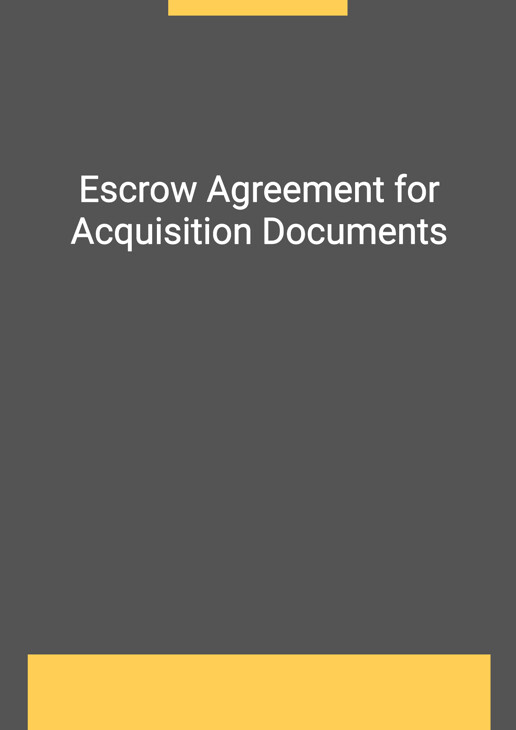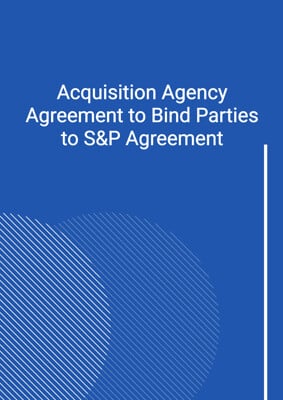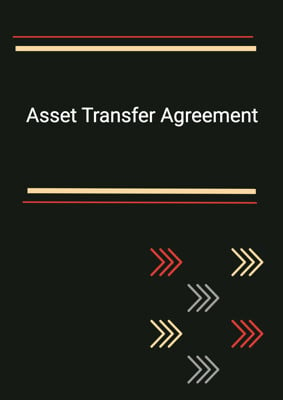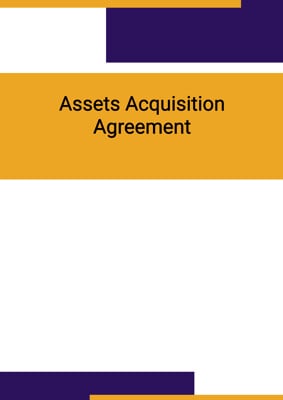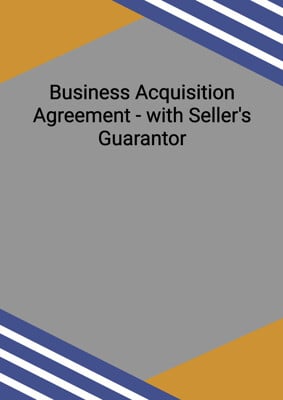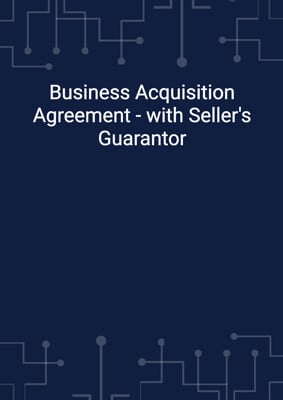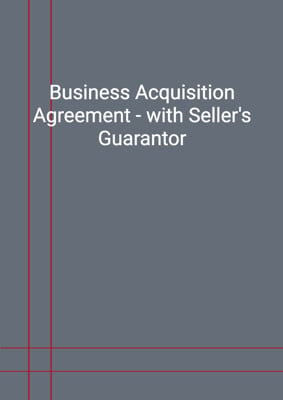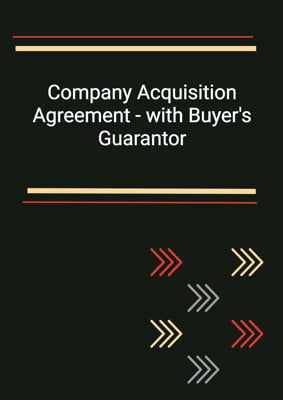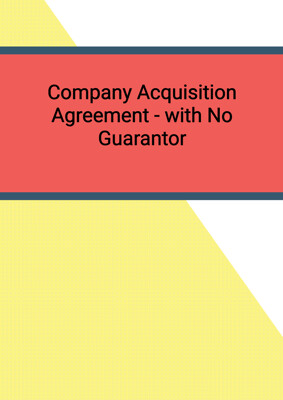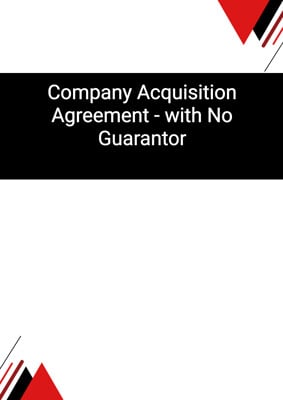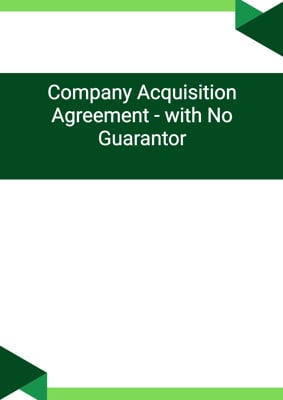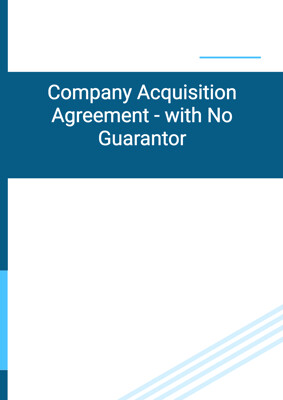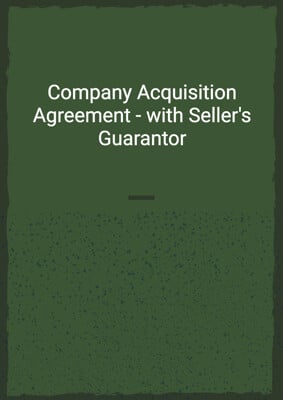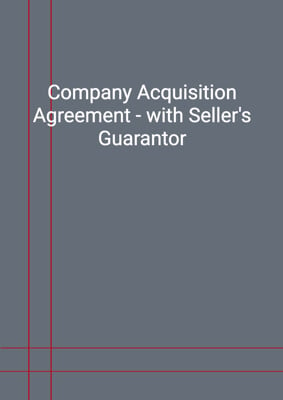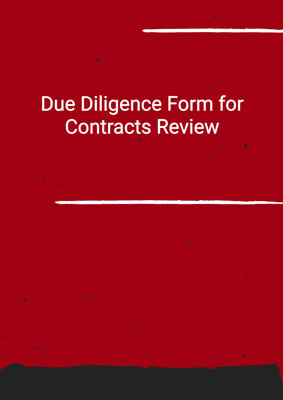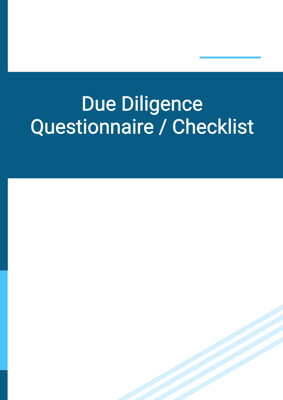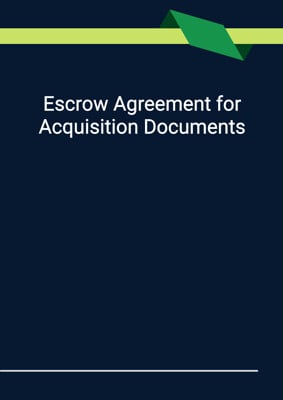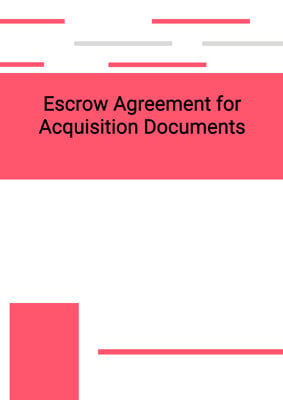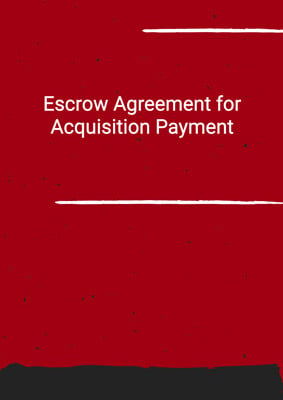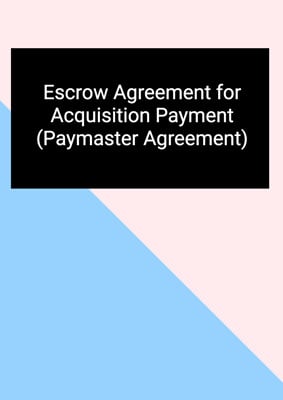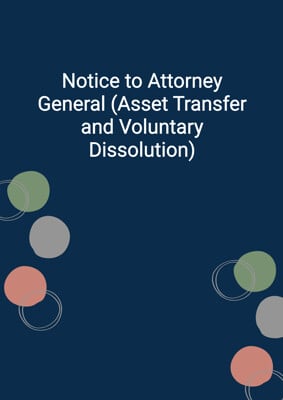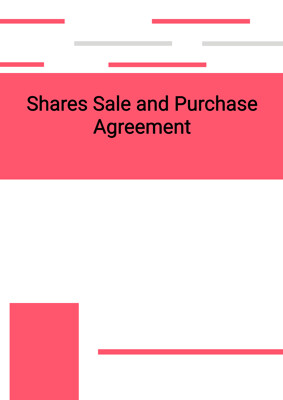How to Tailor the Document for Your Need?
01
Create Document
Fill in the details of the parties. You can click the "Fill with Member’s Information" button to complete it with information saved to your account.
02
Fill Information
Please fill in any additional information by following the step-by-step guide on the left hand side of the preview document and click the "Next" button.
03
Get Document
When you are done, click the "Get Document" button and you can download the document in Word or PDF format.
04
Review Document
The document should be signed by the authorised signatory (or directors of a company) and witnessed to complete the formality.
Document Preview
Document Description
The Escrow Agreement for Acquisition Documents is a legal document that outlines the terms and conditions for the escrow of certain documents related to a sale and purchase agreement. This agreement is entered into between three parties: the buyer, the seller, and the escrow agent. The importance of this document lies in its role in ensuring the safekeeping and proper release of the documents involved in the sale and purchase agreement.
The entire document is divided into several sections, each serving a specific purpose. The first section is the interpretation section, which defines the expressions used in the document. It clarifies that the expressions defined in the sale and purchase agreement have the same meaning in this agreement unless otherwise specified.
The second section deals with the deposit of documents. It states that the escrow agent will hold the documents until their delivery by each party on completion of the sale and purchase agreement. It also specifies that the documents cannot be amended, modified, or supplemented after deposit without the agreement of all parties involved.
The third section introduces the concept of a completion notice. The buyer is required to notify the other parties in writing within 3 business days after all the conditions precedent have been fulfilled or waived. This notice signifies that the completion of the sale and purchase agreement is imminent.
The fourth section outlines the process of releasing the documents from escrow. It states that upon receipt of the purchase price by the seller, the documents will be released from escrow, and completion will be deemed to have taken place. The escrow agent will date each document with the date of completion before forwarding them to the entitled parties.
The fifth section addresses the indemnity of the escrow agent. It clarifies that the parties waive any rights against the escrow agent and agree to indemnify and hold the escrow agent harmless from any claims, actions, liabilities, or expenses arising from the performance of its duties, except in cases of fraud, negligence, or wilful misconduct.
The sixth section covers the termination of the agreement. It states that if the agreement terminates without completion or release of the documents, the escrow agent will either return the documents to the party that deposited them or destroy all copies of the documents, depending on the chosen termination option.
The seventh section allows for variations to the agreement, stating that any variation must be in writing and signed by all parties involved. The eighth section prohibits the assignment or transfer of rights under the agreement without the written consent of the other parties.
The ninth section addresses the execution of the agreement in counterparts, allowing for multiple copies to be considered as one instrument. The tenth section clarifies that the failure or delay in exercising any right or remedy provided by the agreement does not waive or preclude its future exercise.
The eleventh section emphasizes that the rights and remedies of each party under the agreement are cumulative and in addition to their rights under general law. The twelfth section outlines the rules for giving notices under the agreement, specifying the methods of delivery and the deemed times of service.
The thirteenth section states that the agreement is governed by a specified jurisdiction. The fourteenth and final section clarifies that the agreement does not confer any rights on third parties to enforce its terms.
In summary, the Escrow Agreement for Acquisition Documents is a crucial document that ensures the proper handling and release of important documents related to a sale and purchase agreement. It covers various aspects such as document deposit, completion notice, release of escrow, indemnity, termination, variations, and more, providing a comprehensive framework for the escrow process.
How to use this document?
To use the Escrow Agreement for Acquisition Documents effectively, follow these steps:
1. Understand the purpose: Familiarize yourself with the importance of the document, which is to ensure the safekeeping and proper release of documents related to a sale and purchase agreement.
2. Deposit the documents: Gather all the required documents listed in the schedule and deposit them with the escrow agent. Ensure that the documents are in their original form and cannot be amended without the agreement of all parties.
3. Notify completion: Once all the conditions precedent have been fulfilled or waived, the buyer should provide a written completion notice to all parties involved. This notice signifies that the completion of the sale and purchase agreement is imminent.
4. Release of escrow: Upon receipt of the purchase price by the seller, the escrow agent will release the documents from escrow. The escrow agent will date each document with the date of completion before forwarding them to the entitled parties.
5. Indemnify the escrow agent: All parties agree to waive any rights against the escrow agent and indemnify it against any claims, actions, liabilities, or expenses arising from its duties, except in cases of fraud, negligence, or wilful misconduct.
6. Termination: If the agreement terminates without completion or release of the documents, the escrow agent will either return the documents to the party that deposited them or destroy all copies, depending on the chosen termination option.
7. Seek variations with consent: Any variations to the agreement must be in writing and signed by all parties involved. Seek the written consent of all parties before making any changes.
8. Prohibit assignment: None of the parties should assign or transfer their rights under the agreement without the prior written consent of the other parties.
9. Execute in counterparts: The agreement may be executed in multiple counterparts, with each counterpart considered an original. Ensure that all parties have signed the agreement.
10. Give proper notices: Follow the rules for giving notices under the agreement. Serve notices in writing, either by email, hand delivery, or recorded delivery, and ensure they are properly addressed and marked for the attention of the relevant party.
11. Understand the governing law and jurisdiction: Be aware that the agreement is governed by a specified jurisdiction, and any disputes or legal matters will be subject to the laws of that jurisdiction.
12. No rights for third parties: Remember that the agreement does not confer any rights on third parties to enforce its terms.
By following these steps, you can effectively navigate and utilize the Escrow Agreement for Acquisition Documents in practice.
Not the right document?
Don’t worry, we have thousands of documents for you to choose from:
